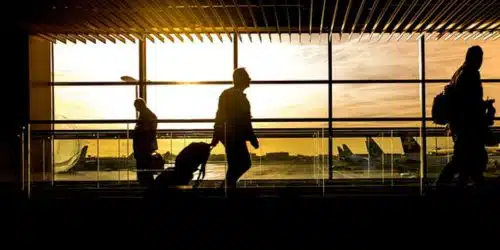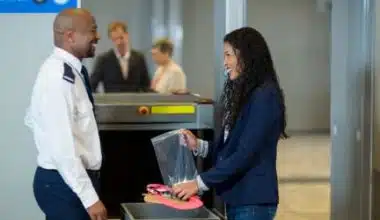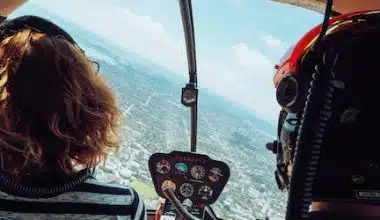The potential of flying standby adds to the adventure of air travel, which has its own set of uncertainties. The draw of standby flights might be appealing, whether you’re a seasoned traveler or a curious explorer. But what are the chances of actually getting on a standby flight? In this detailed guide, we dig into the world of standby travel, studying the factors that influence your chances and assisting you in navigating the uncertainty. So fasten your seatbelts and join us on this journey to explore the chances of getting a standby flight.
Understanding Standby Travel
Before we go into the chances of securing a standby flight, let’s first understand what standby travel entails. Standby travel refers to the procedure of waiting for a seat on a flight without a confirmed reservation. It entails being ready to board a flight if and when there are available seats after all confirmed passengers have checked in. Standby passengers often need to be flexible, adaptable, and willing to embrace the volatility that comes with this mode of travel.
The Appeal and Benefits of Standby Travel
Standby travel might contain various advantages for some people. It offers the option to take advantage of prospective discounts, especially when airlines have unsold tickets they are eager to fill. Standby travel can also be advantageous for those with flexible schedules, last-minute travel plans, or a sense of adventure. Furthermore, standby travel can be a lifesaver in scenarios where you need to reach a place promptly due to emergency circumstances or unanticipated changes in plans.
Factors Influencing Standby Flight Chances
When flying standby, several factors come into play that can have a significant impact on your chances of securing a seat on a flight. Understanding these factors will allow you to better navigate the world of standby travel and increase your chances of success. Let’s look at some of the key factors that influence your standby chances on a flight.
#1. Airline Policies and Standby Procedures
Each airline has its own policies and procedures regarding standby travel. Before embarking on your journey, it is critical that you become acquainted with these rules. Some airlines may prioritize standby passengers based on factors like frequent flyer status, ticket type, or the order in which passengers requested standby.
#2. Seat Availability and Flight Load
The number of available seats on a flight is likely to be the most important factor influencing your standby chances. When a flight is fully booked with confirmed passengers, the chances of acquiring a seat as a standby passenger decrease. In contrast, if a flight has a low passenger load or a high number of no-shows, your odds may improve dramatically. It’s worth noting that seat availability varies not only between flights but also between different times of day.
#3. Travel Time
The time of day or day of the week you travel can affect your chances of getting on a standby flight. Flights during peak travel periods, such as weekends or holidays, are typically crowded and have fewer available seats. If you have the flexibility to travel at off-peak times or on weekdays, your chances of finding open seats may improve.
#4. Seasonality and Destination
Your destination and the time of year you travel can also have an impact on your standby chances. Popular tourist destinations or cities with major events or conferences have higher flight demand, making it more difficult to secure a seat as a standby passenger. Peak travel seasons, such as summer or holidays, can also reduce the availability of available seats. Traveling to less popular destinations or during off-peak seasons, on the other hand, may increase your chances of finding available seats.
#5. Aircraft Type and Seat Configuration
The type of aircraft operating the flight and its seating configuration can have an impact on the number of available seats. Some planes may have more seats than others, increasing your chances of finding an open seat on a standby passenger flight. Additionally, some seating configurations, such as a higher volume of business or first-class tickets, can limit the availability of economy seats for standby customers. Familiarizing yourself with the aircraft type and seating arrangement can help you estimate the chances of finding an open seat.
#6. Airport Hub and Connecting Flights
The airport you’re flying from and its status as an airline hub can influence your standby chances. Major airline hubs tend to have more flight options and potential connections, increasing the likelihood of finding available seats on alternative flights. If you’re ready to take connecting flights, particularly through important hub airports, your chances of getting on a standby flight may rise. However, when organizing your trip, keep in mind the time and flexibility required for connecting flights.
What Are the Chances of Getting a Standby Flight?
Now that we’ve looked at the factors that determine standby chances, let’s get to the point: What are the actual chances of getting a standby flight? While it is impossible to give an exact response owing to the ever-changing nature of air travel, we can outline some broad probabilities and tactics to assist you in better measuring your chances.
#1. High-Demand Routes and Popular Flights
If you’re attempting to fly standby on a high-demand route or a popular airline, such as during a peak travel period or a busy holiday season, your chances of acquiring a seat may be relatively low. These aircraft tend to have greater passenger loads and fewer available seats, making it tougher for standby travelers to secure an open position. It’s crucial to set reasonable expectations and investigate other travel options in such instances.
#2. Off-Peak Flights and Low-Demand Routes
On the other hand, if you’re traveling standby on a low-demand route or during an off-peak season, your odds of getting a seat may be much higher. Flights with fewer passengers and open seats provide better prospects for standby travelers. By choosing less popular travel times or destinations, you boost your chances of discovering available seats and enjoying a great standby experience.
#3. Seat Availability and No-Shows
The quantity of available seats on a flight is a critical factor in deciding your chances of traveling on a standby flight. If an aircraft has several open seats, your chances of securing one as a standby passenger improve. Furthermore, the possibility of no-shows can work to your advantage.
#4. Seasonal and Regional Variations
Standby chances can also vary based on the season and region you’re traveling to. Flights to popular vacation destinations, for example, may have higher demand and limited availability for standby passengers during peak holiday seasons. Conversely, less-traveled regions or off-peak seasons may offer better odds of finding open seats.
#5. Standby Priority and Eligibility
As indicated before, standby priority and eligibility can dramatically affect your chances of receiving a seat. Certain categories of passengers, such as airline employees and their families, frequent flyers with elite status, and active-duty military personnel, may receive better priority for standby travel. To effectively assess your possibilities, you must first determine where you fall in terms of priority and eligibility.
#6. Strategies to Increase Standby Chances
While standby travel involves inherent uncertainties, there are strategies you can employ to increase your chances of securing a seat:
- Be flexible: When flying standby, flexibility is essential. To increase your chances of finding an open seat, consider alternate travel dates, nearby airports, and multiple routing options.
- Arrive early: Arriving early at the airport increases your chances of securing an available seat. You’ll have an advantage over others who arrive later if there are open seats. Throughout the procedure, remember to be patient and kind to airline personnel.
- Develop relationships with airline personnel: Getting along with airline personnel, particularly gate agents, can give you an advantage when flying standby. While it is not a guarantee, a friendly and respectful demeanor can help you secure a seat.
- Consider backup flights: If your preferred flight is fully booked or has limited availability, it’s a good idea to plan ahead of time. To increase your chances of finding an open seat, look into alternative flights that depart around the same time or have connecting options.
- Upgrade your ticket: Paying for an upgrade to a higher class of service may increase your chances of getting a seat on a standby flight in some cases. Upgrades may grant access to seats in premium cabins that economy-class standby passengers do not have.
While it’s impossible to provide a definitive response to the topic of standby flight chances, recognizing the contributing factors and applying effective techniques will boost your prospects of success.
Standby Priority and Eligibility
Understanding standby priority and eligibility is essential for determining your chances of getting a seat. Airlines frequently assign priority ratings to standby passengers, which can influence the order in which they board. Let’s look at some of the most typical types of travelers who might be able to fly on standby.
#1. Airline Employees and Their Families
Airline employees, including pilots, flight attendants, and other crew members, typically have the pleasure of flying standby. Immediate family members of airline employees may also be eligible for standby travel perks, however, the level of priority and eligibility can vary.
#2. Frequent Flyers and Elite Status
Frequent fliers who have acquired elite status through airline loyalty programs have enhanced priority for standby travel. The higher your tier, the greater your chances of earning a seat. Elite status is frequently based on variables such as frequent travel, miles flown, or annual spending with the airline.
#3. Military Personnel
Active-duty military personnel and some veterans may be eligible for standby travel benefits or discounted fares through military-specific programs. These initiatives can increase their chances of being assigned to a standby flight.
Standby Travel Strategies and Tips
While standby travel can be unpredictable, there are techniques and tips you can use to improve your chances of being able to board a standby flight. Let’s look at some effective techniques for increasing your chances of success with standby travel.
#1. Research and Plan Ahead
Conduct extensive research on the airline’s policies, procedures, and historical flight patterns before embarking on your standby journey. Understanding past trends and seat availability can provide you with useful information about your chances.
#2. Flexibility is Key
Being adaptable in your travel plans is critical for standby travel. To maximize your chances of getting open seats, consider alternate trip dates, nearby airports, and numerous connecting flights.
#3. Arrive Early
Arriving early at the airport can give you an advantage when flying on standby. If there are available seats, you will have a better chance of getting them. Remember to be patient and nice throughout the process, since airline personnel are more inclined to assist with passenger accommodations.
Is it hard to get on a standby flight?
The difficulty of getting on a standby flight can vary depending on several factors. While there is no definitive answer, standby travel can be challenging at times due to the unpredictability of seat availability and other factors.
Do you usually get on a standby flight?
No standby seat is guaranteed—hence, the name “standby”—but there are several ways you might boost your chances. You first need to request standby as soon as possible, since airlines normally prefer standby fliers on a first-come, first-served basis.
How do you qualify for standby flights?
Your relationship with the airline and the specific rules in place frequently determine whether you qualify for standby flights. Here are some common kinds of travelers that may be qualified for standby travel:
- Airline Employees
- Retirees
- Buddy Passes
- Frequent Flyer Programs
- Military Personnel on Active Duty
It’s worth noting that standby travel eligibility varies by airline and may be subject to additional terms and conditions. It’s recommended to check with the airline directly or review their official policies to determine if you qualify for standby flights and what specific benefits you may receive.
How can I increase my chances of getting on a standby flight?
If you’re looking to increase your chances of getting on a standby flight, here are some strategies you can employ:
- Be Flexible
- Arrive Early
- Research Flight Loads
- Explore Less Busy Travel Times
- Build Relationships with Airline Staff
- Consider Alternative Routes
- Upgrade Your Ticket
- Be Prepared with Backup Options
Remember that standby travel is inherently unpredictable, with no guarantees of obtaining a seat. It is critical to approach it with patience, flexibility, and optimism.
What happens if my standby flight is full?
There are several options if your standby flight is full and there are no available seats:
- Wait for the Next Flight
- Explore Alternative Flights
- Standby Priority
- Explore Other Airports
- Reassess Your Options
Do you lose your seat if you fly standby?
When you fly standby, you don’t have a confirmed seat reservation like regular passengers. Your seat on a standby flight is not guaranteed, and it depends on the availability of open seats on the flight you wish to board. If there are enough available seats, you may be able to secure a seat and travel on that flight. However, if the flight is full or there are not enough open seats, you may not be able to board the flight.
Conclusion
In the world of air travel, standby flights offer a unique and adventurous way to reach your destination. While the chances of getting on a standby flight can vary based on several factors, including airline policies, seat availability, and priority status, being prepared and flexible can increase your odds.
By understanding the intricacies of standby travel, familiarizing yourself with airline procedures, and employing effective strategies, you can navigate the uncertainties and increase your chances of securing a seat on a standby flight. So, if you’re ready to embrace the unknown and embark on an exciting travel experience, consider exploring the world of standby travel.
- WHAT IS STANDBY FLIGHT? All You Need To Know
- HIKING TRAILS COLORADO SPRINGS IN 2023
- ECONOMY CLASS: Flights and Features
- HOW MANY COUNTRIES ARE THERE IN THE WORLD: Detailed List
- WHAT HAPPENS IF YOU MISS YOUR FLIGHT | Best Actions To Take






